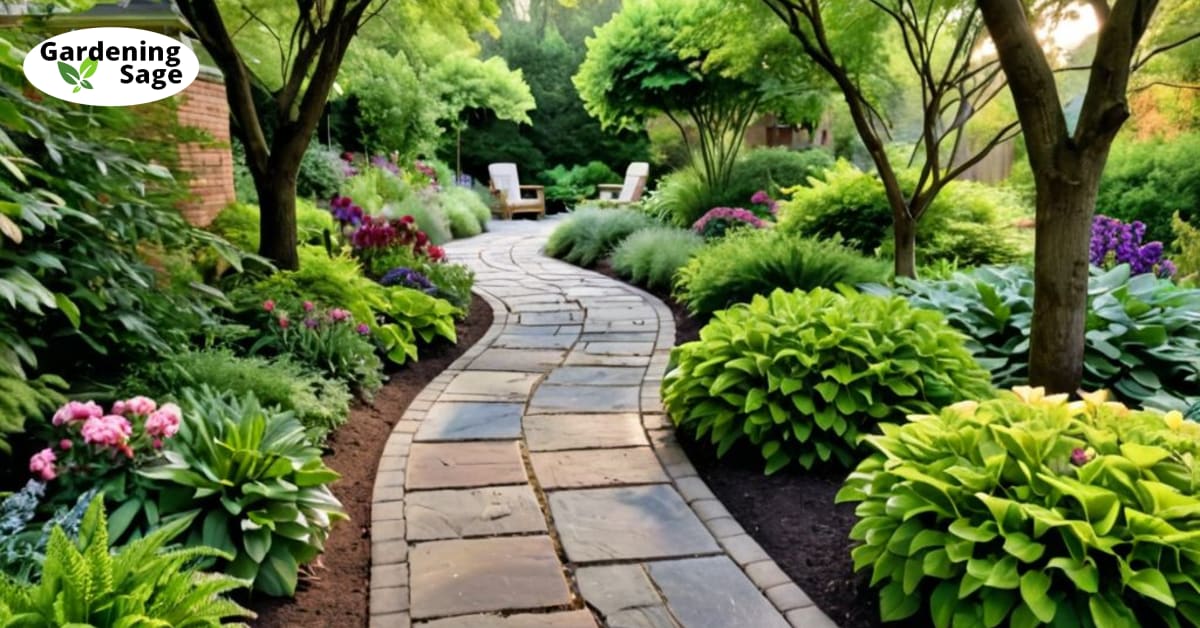Charting Your Garden Path: Designs for Tranquil Travel
When mapping out the layout of your garden, the winding paths you pave act as arteries carrying lifeblood through your verdant sanctuary. Far more than just a means of traveling from point A to point B, thoughtfully planned garden paths have the power to direct focus, reinforce mood, and greatly enhance your visitors’ experience. They are the silent guides that lead one through the myriad of textures, colors, and fragrances that your garden offers.
As you embark on planning your garden paths, consider the following tips and design techniques for crafting meandering trails that delight the senses and create a harmonious blend of nature and design. These pathways can become a journey that captures the essence of the garden’s spirit, inviting a sense of exploration and serenity.
Focus the Journey
Strategically position your paths to highlight key focal points within your garden. Guide visitors towards striking specimens, garden art, cozy sitting areas, or other destinations you wish to emphasize. The journey along these paths should be one of discovery and surprise, where each turn brings a new vista or a hidden nook to enjoy.
For example, a winding gravel path with a bright perennial border on one side leading to a unique water feature creates anticipation and a visual payoff. The sound of water gently splashing can draw visitors forward, while the sight of vibrant flowers captures their attention and invites closer inspection.
Set the Pace
The width of your path influences the pace of the garden stroll. Wider walkways allow groups to comfortably pass through together, while narrower trails create a more intimate, reflective experience best suited to solo wanderers. The choice of path width should be deliberate, reflecting the intended use and atmosphere of each garden area.
For gathering spaces, choose sufficiently broad paths. Meandering side trails can be tighter to impart a sense of discovery and personal connection with the surrounding flora. These narrower paths can encourage a slower pace, allowing visitors to appreciate the subtle details and textures of the garden.
Complement Plantings
Garden paths intermingle with bordering plants, so select materials that enhance your flora. Rustic flagstone blends nicely with wildflower meadows or cottage garden beds, creating a naturalistic appearance that seems to have emerged organically from the landscape. Modern aggregates like pebbles mirror contemporary, minimalist plant arrangements, providing a clean and understated elegance.
Curving gravel trails with billowing grasses evoke carefree countryside rambles, while geometric pavers crisply divide formal garden quadrants. The choice of path material should be a reflection of the garden’s character, whether it be a relaxed pastoral vibe or a structured, formal ambiance.
Focus on Foot Feel
The tactile nature of your path’s surface beneath feet is key. Natural stone conveys an earthy vibe and varies intriguingly step to step. Bricks or pavers create geometric precision, offering a sense of order and predictability. Wood chips, mulch, or turf flex a softer impression, cushioning the footsteps and enhancing the organic experience.
Test different materials firsthand to choose a foot feel matching your garden’s personality and your visitors’ preferences. Consider the sound that each material makes underfoot, the way it weathers over time, and how it complements the overall sensory experience of the garden.
Year-Round Interest
When snow blankets your garden, paths still meander, so select materials providing visual appeal even in winter. Snow-dusted bluestone lined with evergreens sustains scenic interest when flora fades. The contrast between the cool tones of the stone and the vibrant greens of the evergreens can be striking and beautiful.
Dream up how your path will look in each season, planning plantings to provide varied beauty across the calendar. Consider the bloom times of adjacent plants, the changing foliage colors, and the textures that will emerge throughout the year. Your garden paths should offer a dynamic journey that evolves with the seasons, always offering something new to discover.
Light the Way
Outdoor lighting transforms garden paths from daytime delights into magical nighttime strolls. Spotlights on specimens, lantern posts along trails, and in-ground lights lining the edge create ambience. Go for a subtle glow or make a dramatic statement. The lighting should not only guide visitors through the garden but also highlight the beauty of the plants and features along the way.
Just ensure the style suits your garden’s personality, from classic elegance to contemporary chic. Consider energy-efficient options such as solar-powered lights or LED fixtures that provide long-lasting illumination. The play of light and shadow can add depth and mystery to the garden, enticing visitors to explore its nocturnal charm.














